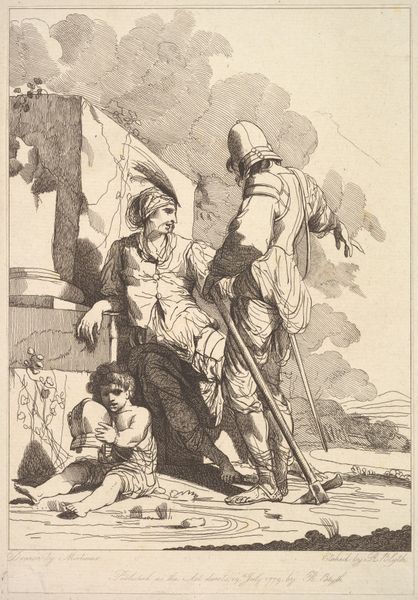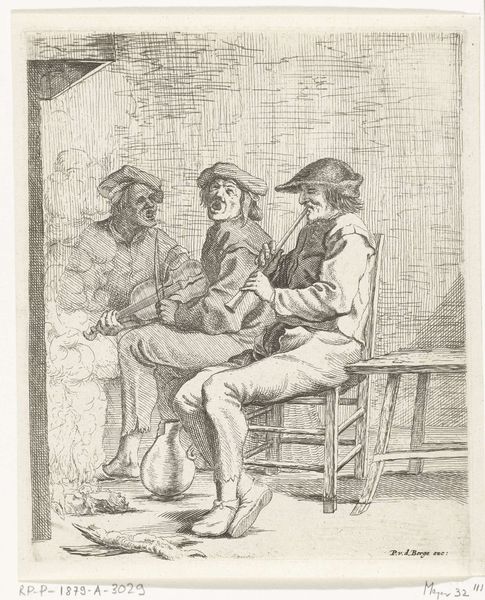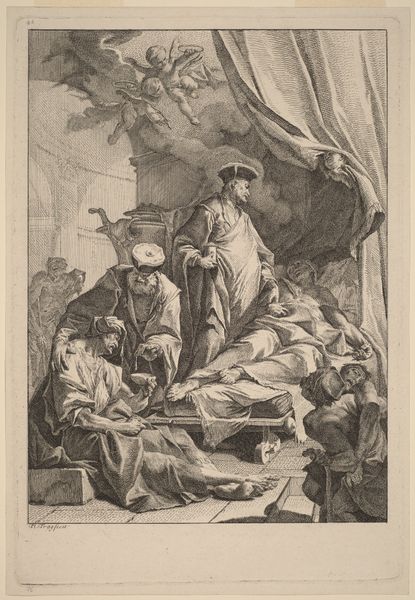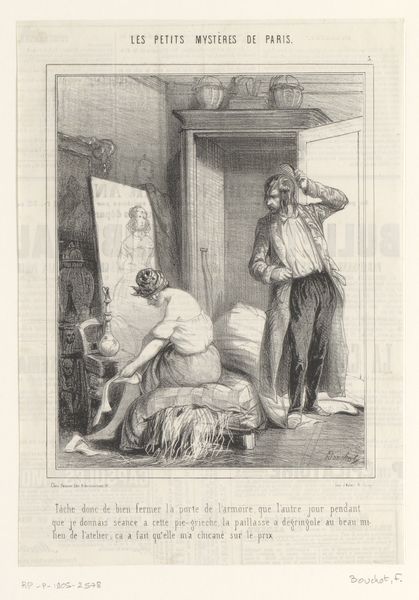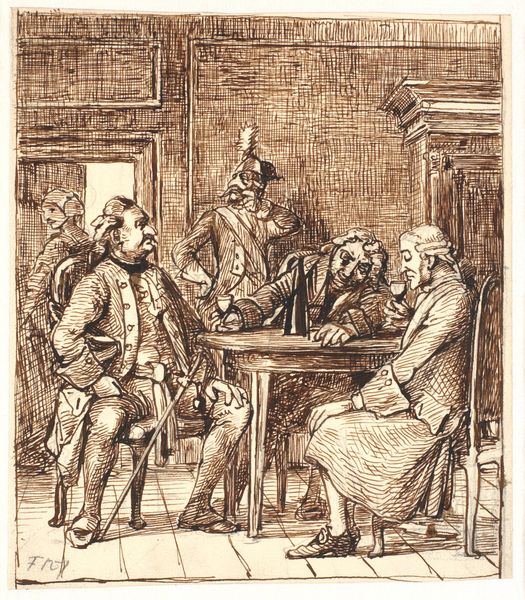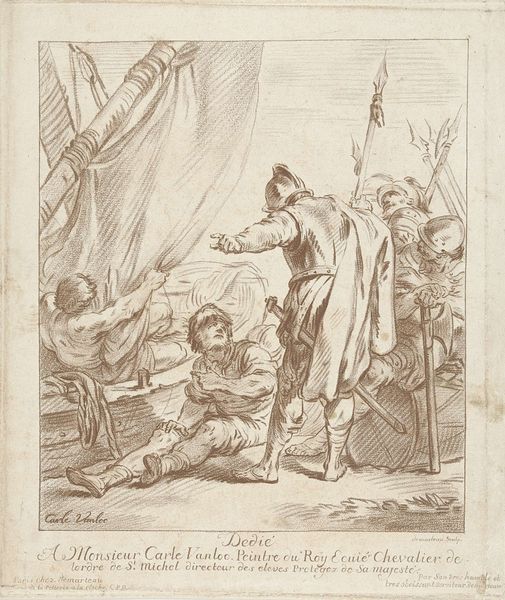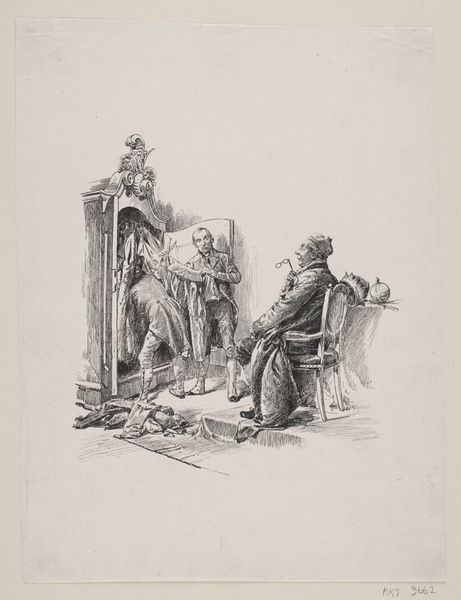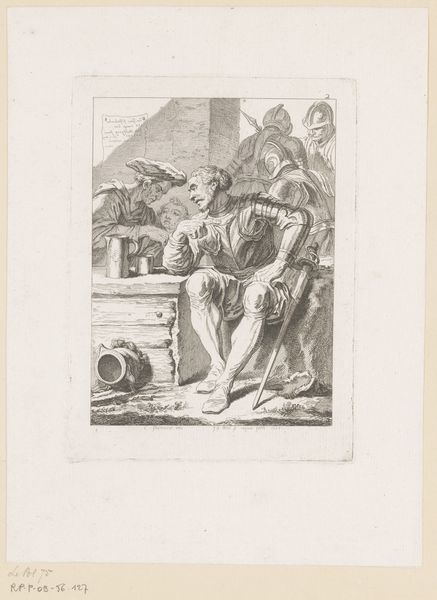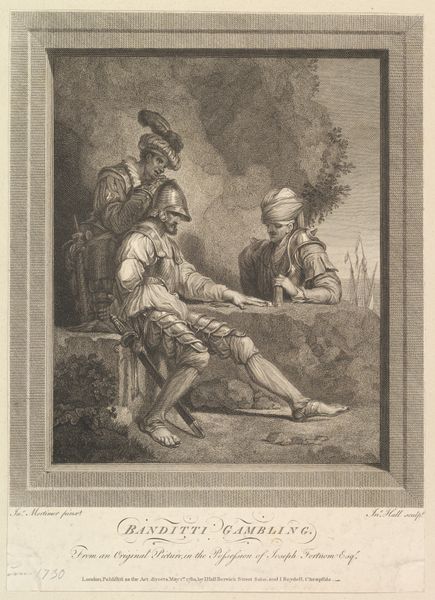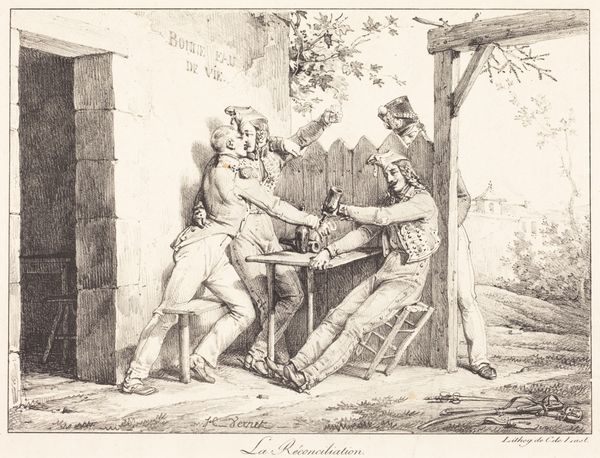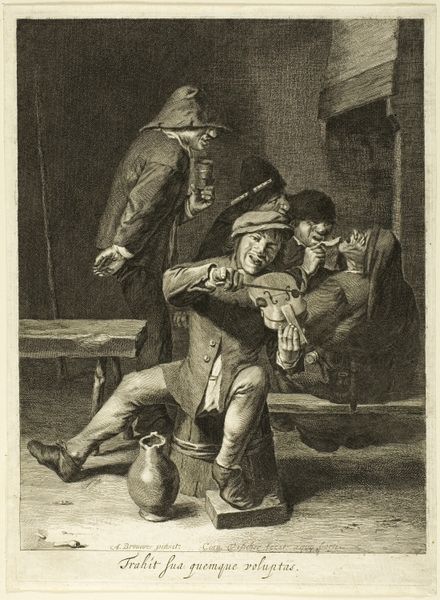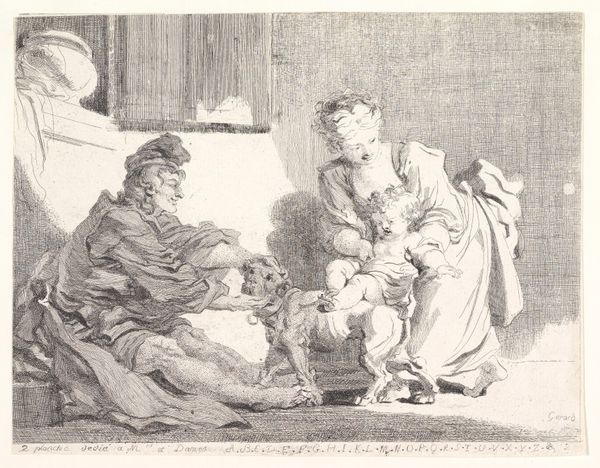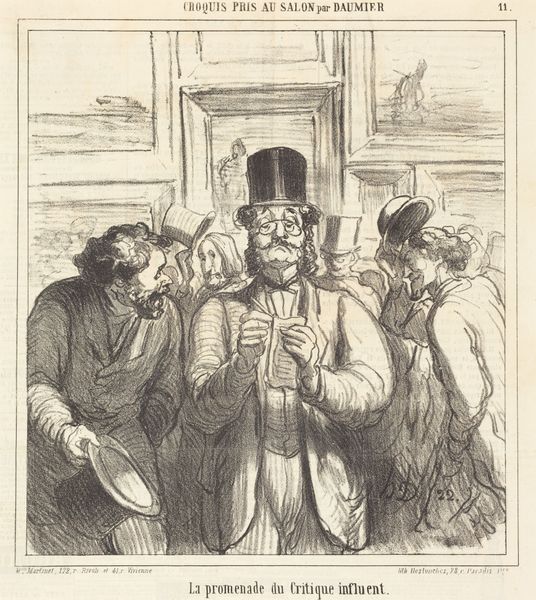
drawing, lithograph, print
#
drawing
#
narrative-art
#
lithograph
# print
#
figuration
#
romanticism
#
history-painting
Dimensions: image: 19.4 x 14.8 cm (7 5/8 x 5 13/16 in.) sheet: 29.2 x 20.8 cm (11 1/2 x 8 3/16 in.)
Copyright: National Gallery of Art: CC0 1.0
Editor: This lithograph from 1830, titled "Les Scélérats!..." by Hippolyte Bellangé, presents a very raw scene. A fallen soldier, a distressed woman, and armed citizens… it has a very immediate and tragic feel to it. What strikes you when you look at it? Curator: I’m drawn to the lithographic process itself. Consider how this image, depicting a scene of popular uprising, would have been reproduced and disseminated. Lithography allowed for relatively inexpensive and widespread distribution. We see here not just a representation of the 1830 revolution, but a material object deeply implicated in shaping its narrative and reaching a wider audience. The means of production are key to understanding its cultural impact. Editor: That's a good point. I was focusing on the drama, but thinking about how easily prints can circulate… Do you think the artist intended it to be mass-produced as a form of political statement, something that challenges fine art’s status? Curator: Exactly! Bellangé, through the utilization of lithography, blurs the boundaries between high art and popular culture. The 'Romantic' style is evident, but is it being consumed differently than, say, a history painting in a salon? This isn’t just about aesthetics; it’s about the material reality of image production and its connection to revolutionary politics. How did this print function as a commodity in 1830s Paris? Editor: So it’s less about the idealized representation of heroism, and more about how the work itself becomes part of the historical narrative, influencing opinion through its ready availability? Curator: Precisely. The materiality of the print allows the artist to enter the fray, becoming part of the manufacturing of meaning and collective identity during this crucial period. It’s the art’s social life and means of production we should examine. Editor: I never considered a print this way. It is clear how material context provides more tools for understanding artwork. Curator: Indeed, looking into how and why something was made, its method and medium, provides the best and clearest perspective.
Comments
No comments
Be the first to comment and join the conversation on the ultimate creative platform.
